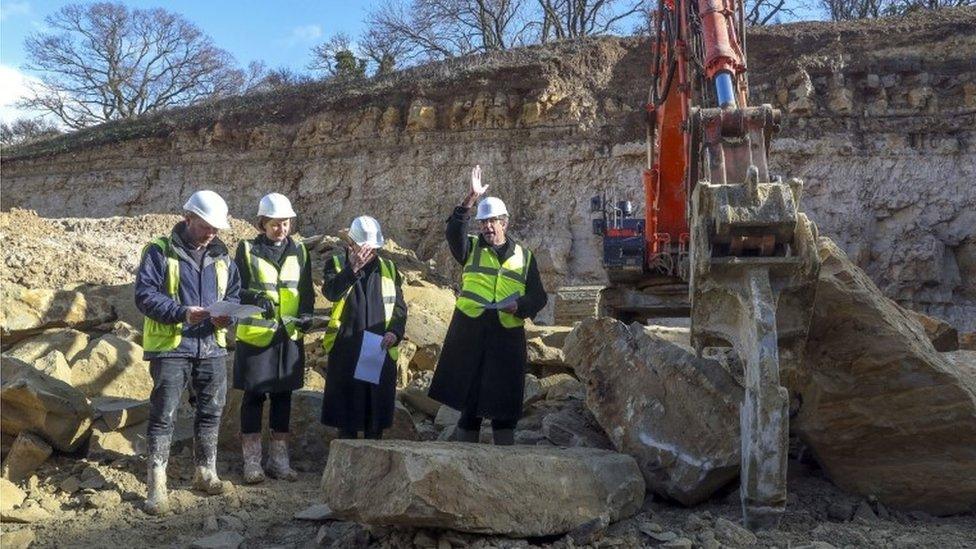Salisbury Cathedral finally sheds exterior scaffolding
- Published
Drone footage shows Salisbury Cathedral without scaffolding
The outside of Salisbury Cathedral can now be seen without scaffolding for the first time in 38 years.
A survey in 1986 revealed the medieval building, which had its first stone laid in 1220, was in need of extensive restoration work.
More than £30m has now been spent and the scaffolding has come down from the latest phase on the east end.
Experts say the cathedral now looks just as it was in the 14th Century, when the spire was finished.

The cathedral's exterior is free of scaffolding for the first time in 38 years
Gary Price, the clerk of works at the cathedral said: "It's a remarkable achievement, I can't actually believe it."
"We have gone round the whole building, photographing, cleaning, pointing, removing vegetation, leaving no stone untouched, so the cathedral is now in the best state that is has been since it was completed" he explained.
Further restoration work will now take place in the north cloisters, including restoring carved stonework but it will not involve the huge amount of scaffolding.
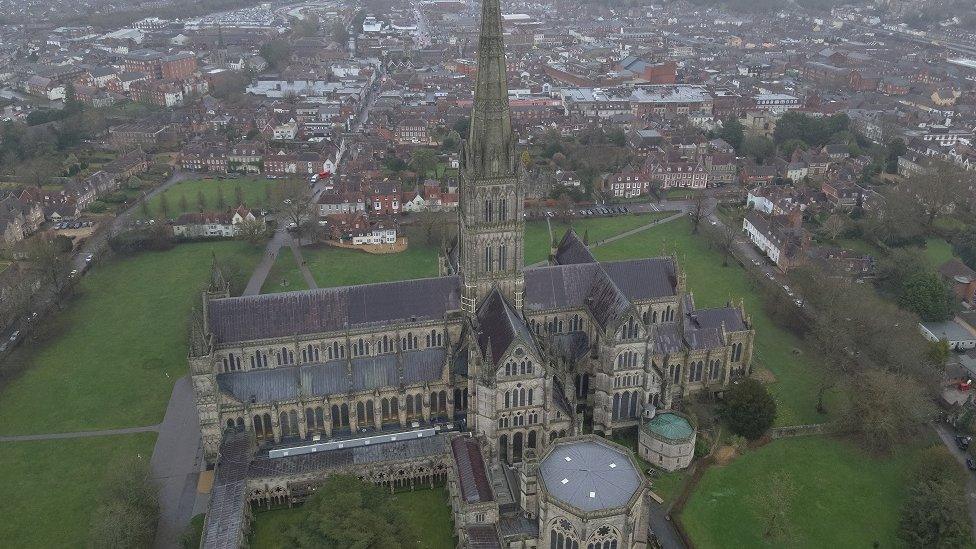
A survey in 1986 showed the outside needed a lot of work
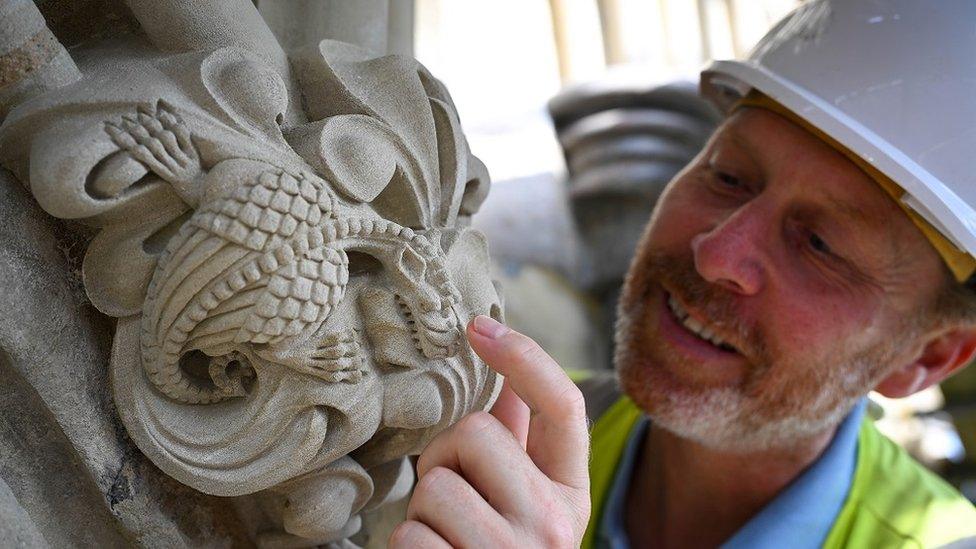
Gary Price at Salisbury Cathedral and handles everything from the masonry team to putting up the huge Christmas tree
Work on the cathedral first starting 800 years ago with the east section of the building, now known as the Trinity Chapel, and it has required work throughout the centuries to keep it in order.
The cathedral was created after a move from a previous one at Old Sarum, the remains of which are now at the English Heritage site. , external
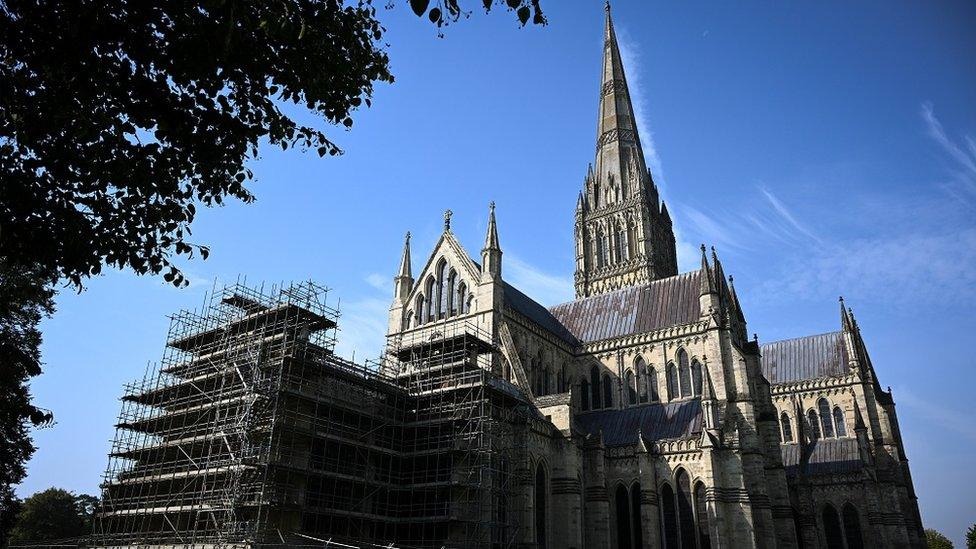
The scaffolding has been extensive over the years, but the works team can now move on to preserving the inside of the building
The cathedral has its own works team trained in heritage crafts, including stonemasonry.
This latest work involved the replacement of 1,100 stones.
Gary Price said it was twice as many as they expected: "Not a lot of work was carried out in the intervening years, so we had to pick up the legacy."

Some of the new stones had carvings to mark significant events and moments - such as Salisbury's secret spitfire factory
Commemorative and memorial stones have also been put in, including the King Charles' stone, one marking Salisbury's World War Two secret spitfire factory and several carved in memory of loved ones which have been part of a sponsorship scheme.
While the exterior of this huge building is now free from scaffolding, the next job of the works team has already started inside the walls.

Follow BBC West on Facebook, external, X, external and Instagram, external. Send your story ideas to: bristol@bbc.co.uk , external
Related topics
- Published21 February 2020
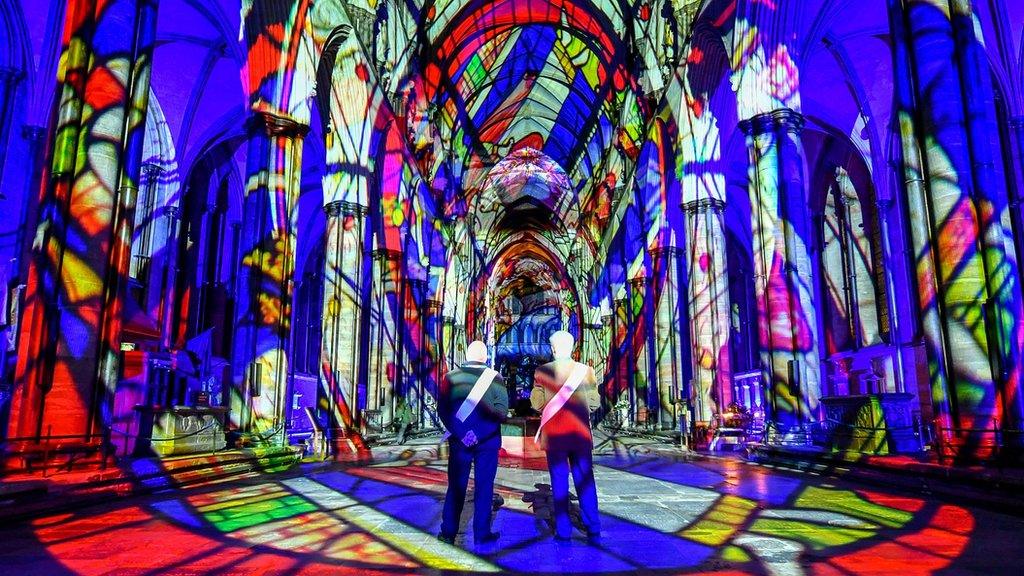
- Published11 February 2020
